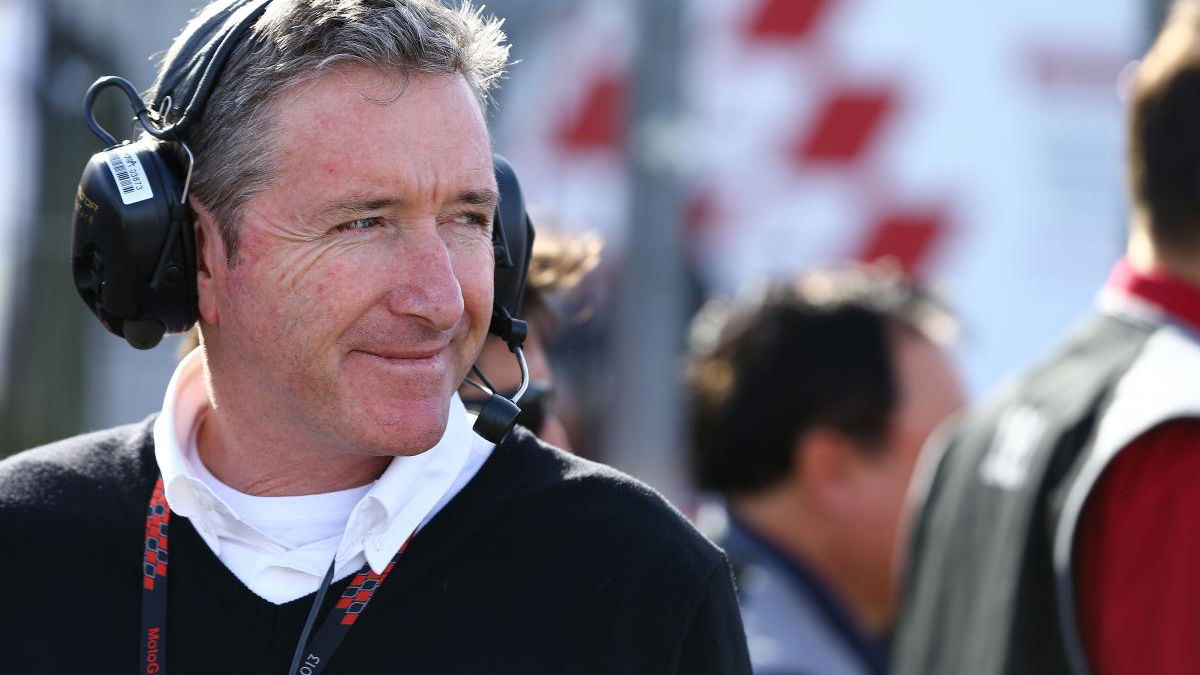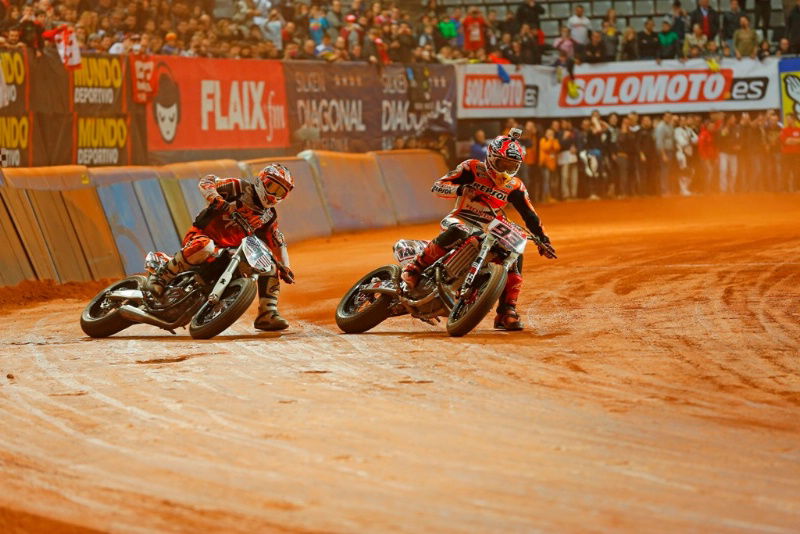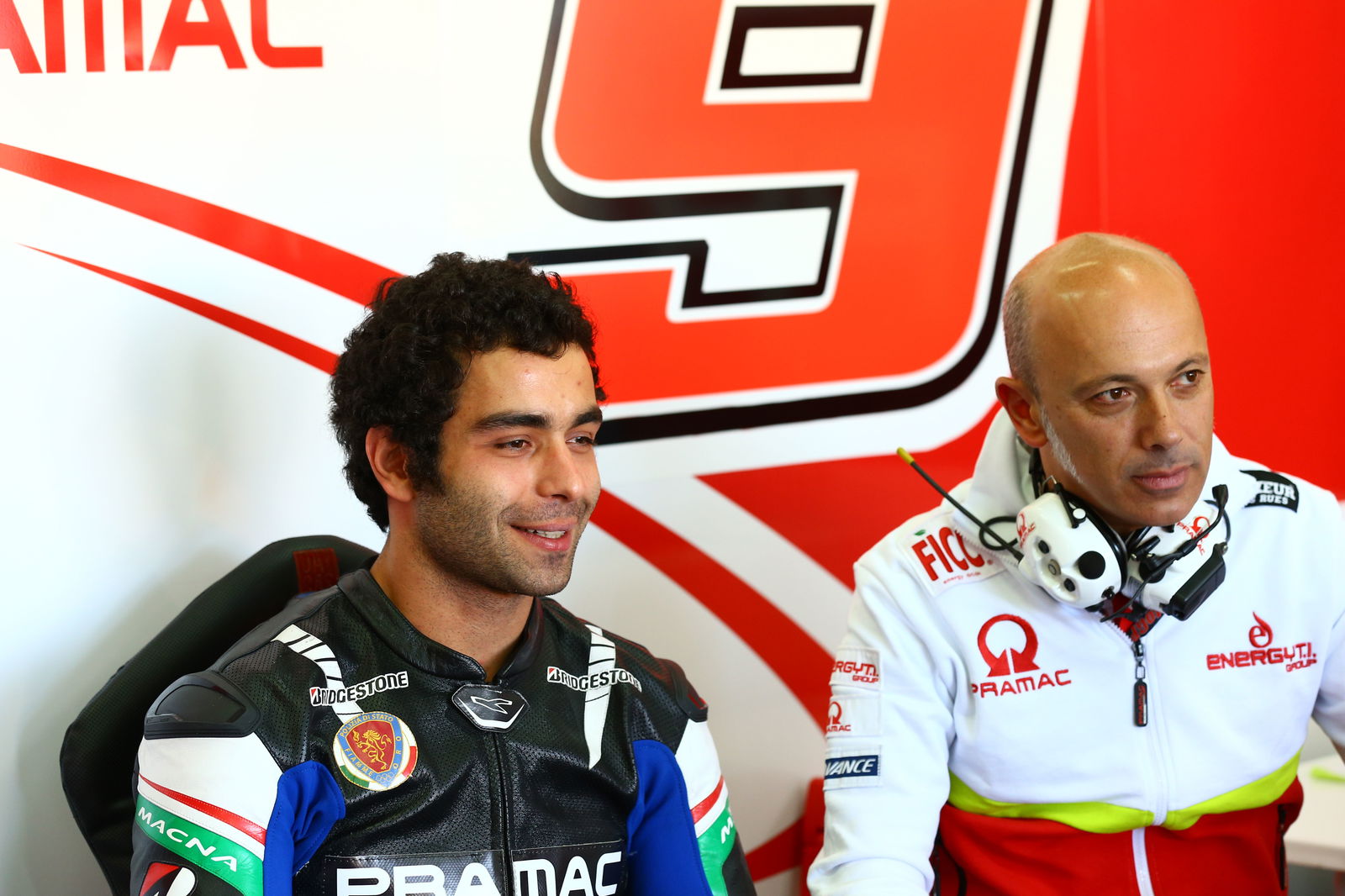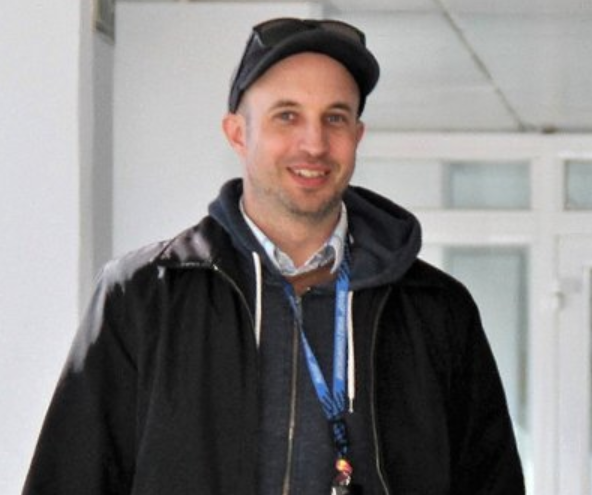EXCLUSIVE Mike Webb (MotoGP Race Director) - Q&A

An exclusive interview with MotoGP Race Director Mike Webb, conducted during the penultimate round of the season at Sepang.
The interview begins with the 2016 technical rules, which will see a control ECU and single set of to-be-confirmed regulations for all competitors, before covering the return of Michelin, riding standards, Jack Miller's jump to MotoGP and more...
Crash.net:
If we can start with the 2016 rules. To confirm, the central idea is that there will be no Factory or Open classes and just one set of technical rules for everybody?
Mike Webb:
Exactly. The target for years and years, certainly since 2012, has been one set of technical rules. The interim classes within a class have been a means to an end. So the path to 2016 began by introducing private bikes [CRT] - and having more bikes on the grid - then slowly making them more competitive [Open] and finally ending up at one set of rules for everybody.
Crash.net:
Would it be such a bad idea if the genuine privateers continued to receive some sort of benefits, such as the extra fuel and tyre options in the Open class this year?
Mike Webb:
Talking personally, I'm not completely against some forms of performance levelling. Lots of motorsports have that. But from a pure philosophy point of view we would much, much prefer to have one set of regulations and whoever does it best, does it best.
For me, what we are aiming at is for the privateers to start with the same equipment as the factories. Ideally that is what we are after. But I know that we are dealing with the real world, so satellite bikes for example are a slightly different spec.
We know that the factories will always do a better job of getting their equipment race ready and tuned a bit better, whatever the rules, but we want everyone to be at a similar starting point in terms of their equipment.
Looking back, there was a time in the two-stroke era when production race bikes were available. You could buy a copy of pretty much what the factories were running. The factories made use of all their R&D and tuning, and they could afford the better riders. So they were still pretty much assured of winning the races.
Crash.net:
Which of the three present classes - Factory, Ducati Factory and Open - do you think would be nearest to the 2016 regulations?
Mike Webb:
It's somewhere between Open and Factory - but it's not quite what the Ducati exception is either. Simply because the one thing that is hard and fast is that the electronics, hardware and software, will be the same for everybody from 2016. So that is one thing that Ducati doesn't have to do within the current rules.
The final proposal and final agreement for 2016 has not yet been made between the MSMA and Dorna/IRTA and negotiations are ongoing. Proposals are being put on the table and discussed to come to some middle ground. My feeling is that the fuel limit and number of engines will be somewhere between the current levels for Factory and Open. That's pretty much where I think we'll end up as a sensible compromise.
[Current Factory class race fuel limit is 20 litres, 24 litres for Ducati/new manufacturers & Open class. Factory class allowed five engine changes, 12 changes for Ducati/new manufacturers & Open class].
Crash.net:
So there should be no big surprises for the manufacturers, with the main elements of the 2016 rules already up and running in at least one of the current classes?
Mike Webb:
That's a good point to bring up. When we introduced the Open class, with the standard ECU software and hardware, I know there was a lot of scepticism from the factories. Their view was, 'for the privateers that's fine, but we can't race like that'.
With Honda, Yamaha and Ducati having now run some of their motorcycles in the Open class, with that ECU system, they are 'ok, maybe this can work'. So with a bit of comprise on the details, I firmly believe we can all run quite happily with the single ECU and one set of technical rules in 2016.
Crash.net:
You have other initiatives in Moto2 and Moto3 such as random engine supply (which in Moto3 means each manufacturer doesn't know which engines will go to which of its riders, helping ensure all riders get the same specification). Would you like to see any of those rules brought into MotoGP?
Mike Webb:
The things that were done in Moto2 and Moto3 were to keep costs under control. And by levelling performance that automatically controls costs because you haven't got people spending lots of money to try and improve performance.
There is no thought whatsoever to bring in things like random engine distribution for MotoGP, because it is the high-tech end of our racing whereas Moto2 and Moto3 are intended to be feeder classes where riders and teams get trained and the racing is competitive. There is some technical interest but the real technical interest is in MotoGP.
For that reason I can't see that we'd go towards a random engine type of system. However, again from the cost point of view, already somewhat informally there is a price on what the factory should be selling or leasing their bikes for. So from the point of view of price controls, yes we are open to that and it is a tool we can use.
Crash.net:
What is the target cost to teams for the new 2016 MotoGP machines? Are you aiming to bring the satellite bike price down to the same one million euros per year target that was set for the Open bikes?
Mike Webb:
Firstly, the cost is more an agreement between Dorna and the manufacturers, with Dorna giving guidelines of what they believe a bike should cost the teams. It is not written into the technical regulations and it is not in the rule book.
Having said that, we believe the present pricing is reasonable, but again that negotiation is ongoing.
Crash.net:
As well as the technical rules, Michelin are replacing Bridgestone as exclusive tyre supplier for 2016. What are the main changes that will come with that? Will Michelin offer a larger range of tyres for example, or different kinds of tyres?
Mike Webb:
The rules as such are not going to change but as part of the negotiation with Michelin to enter the championship, they have agreed that they will supply a wider range and more tyres for each race. I also believe that we will be getting an intermediate tyre.
Their brief is to provide a range of tyres that can handle any conditions, so I think that technically means more tyres anyway, in order to cope with a wider range. So while there may not be a greater number of tyres available to each rider during a race weekend, there will be more tyre options. It will mean that if we suddenly have a cold weekend that wasn't predicted we are able to cope with it better. That kind of thing.
We will continue to oversee the tyre allocation process, making sure the tyres are the same for everyone and that there are no special tyres for one rider. All of that will stay the same.
Crash.net:
If we could turn to this season, have you been happy with the riding standards?
Mike Webb:
I'm reasonably happy. There is not too much lunatic stuff going on. It almost depends what class we are talking about.
Moto3 has young kids starting out in their grand prix career. There is a lot more teaching necessary in Moto3 and the nature of the motorcycle means lots of young kids can ride them very fast. Whereas MotoGP bikes demand an enormous amount of respect and the rider has more experience by the time they get there. So MotoGP is less of an issue than Moto3, with Moto2 somewhere in between.
While overall I'm reasonably happy, there are a couple of ongoing problems, especially riders getting in each other's way in Moto3 qualifying, which we've been handing out penalties for.
We are continually looking for a way to police that better and maybe even introduce some automatic systems. I have to tell you it is very, very difficult to do. Because there are times when I want a rider to go slow and get out of the way. It is also not illegal to follow someone and it is not illegal to go slow as long as you are far off the racing line. But it's getting all the riders to behave correctly. It's an ongoing thing.
Crash.net:
Jack Miller is going straight from Moto3 to MotoGP next year. Miller's obviously going to have a full winter testing programme, but from your point of view as Race Director, what would any young rider need to do to satisfy you that they were ready for MotoGP?
Mike Webb:
It goes without saying that a successful grand prix rider in any class is a very, very high level rider. So I'll leave the riding aspect. From my side it's about maturity and respect.
As I alluded to earlier, Moto2 and Moto3 bikes are easier to ride, have a lot less power, a lot of people can ride them really fast and there are lots of alternative lines in each corner, meaning you can get away with a lot.
With MotoGP the consequences of doing something wrong are very high and the possibilities in every turn are very much more limited. You pretty much have one line that you have to be on and there is a braking distance that you need to be very close to. There is not a great deal of margin for error and the rider needs to understand the consequences of overdoing it.
A good example is Scott Redding. He was a really, really good Moto2 rider. Obviously far ahead of the bike, meaning his ability was much greater than the limit of the bike. It was very easy for him to go fast, get away with lots of things and stay in control.
In MotoGP he is obviously an excellent rider and his progress has been really good this year. But you can also see the level of effort and concentration that he has to put in. There is less room for the flamboyance, the wild overtaking manoeuvres and everything like that in MotoGP. You have to be very much more in control.
The same is going to happen to Jack. He is clearly a standout rider in Moto3 and is way ahead of the capabilities of that bike, but he is going to have to go through a learning curve in MotoGP. Providing he has the patience and maturity to handle that he is going to be a great MotoGP rider. But you can't leap on it and ride it like a Moto3 bike.
Crash.net:
You've called Jack in for a few meetings this year, both as the instigator and victim of on-track incidents. It's been such a big season for him, going from not even being on the podium to leading the world championship, have you seen a change in Jack during the year?
Mike Webb:
Jack is a real character. He's got a big personality. I get on fine with him, but obviously he hates me from time to time when I tell him not to do stuff!
Jack is strong minded, so if we are disciplining him for something, he's very vocal about not accepting he is wrong. But within a fairly short period of time he has calmed down, understood it and gets on with the racing. The good thing is that he is mature enough not to let it get to him. He just goes 'ok, that's over. I've had my tantrum and now I'm back into the racing'.
I've seen perhaps the biggest change in Jack over the last two races [Japan and Australia], where he's had a string of less than ideal results and has seen his championship lead go away. You could see the pressure getting to him and I was really impressed in Australia when he turned that around and got on with the racing. If he can keep that level of maturity and see the bigger picture he'll do well in MotoGP.
[CLICK HERE for a detailed explanation of why Race Direction rejected the protests made by Alex Marquez's team against Jack Miller and Danny Kent at Sepang].
Crash.net:
You introduced a dashboard warning system for flags this year, how has that worked?
Mike Webb:
We are very, very happy with it. Every bike in every class has it. There are five signals that the riders can see on their dash, which were specifically chosen because they can only come from Race Direction. The marshals do not have the right to give those signals, which are: Red flag, black flag, black and orange flag [mechanical problem] and the two penalties - ride through and change position.
The reason for restricting it to those five is because something like a rain flag or yellow flag is the sole responsibility of the marshal on the corner. For example as soon as a marshal feels a few drops of rain he puts the rain flag out. The same for an accident. The yellow flag goes out as soon as he sees the accident. For that reason those flag systems are not on the dashboard because I don't control them directly and I need to be certain that the right information is being sent to the riders.
Crash.net:
Is there a next step to the system or will it stay the same for now?
Mike Webb:
It will stay the same next season. It has become apparent that to move on and add different flag systems, such as the yellow or blue flags, we need better technology on the ground. Which means better communication with all of the marshal posts. Things that right now are not in place to the level that we want them, but we are moving towards that. When that all comes together, the other signals will be able to go on the dash as well.
Crash.net:
Thanks Mike.
Mike Webb:
You're welcome.


